On the Original Illustrations of Trollope's Fiction
He Knew He Was Right
Written 1867 (13 November) - 1868 (12 June)
Serialized 1868 (17 October) - 1869 (22 May), Weekly Sixpenny Parts
Illustrated Marcus Stone
Published as a book 1869 (May), Strahan
Marcus Stone provided 32 vignettes or rubrics for the opening chapters and 32 full-page
illustrations for each instalment of He Knew He Was Right. I have reproduced 22 of full-page illustrations with their accompanying captions and 12 rubrics (all-labelled rubrics with descriptive captions supplied by me). I follow the reproductions with an excerpt from Chapter 6 of my book (on Stone's style).
- Chapter 1: Showing how Wrath began
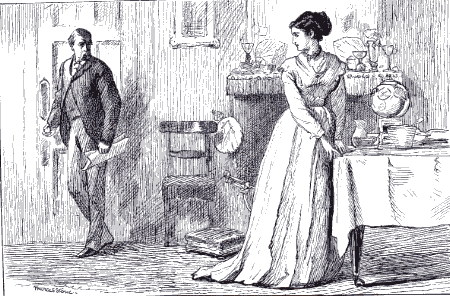 Marcus Stone, "Shewing how wrath began" , He Knew He Was
Right
Marcus Stone, "Shewing how wrath began" , He Knew He Was
Right
- Chapter 6: Showing how the Quarrel progressed
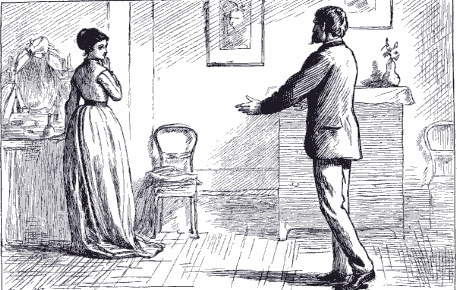 Marcus Stone, "Shewing How Reconciliation Was Made" , He Knew He Was
Right
Marcus Stone, "Shewing How Reconciliation Was Made" , He Knew He Was
Right
- Chapter 7: Miss Jemima Stanbury, of Exeter [rubric]
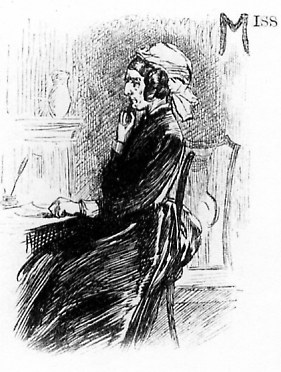 Marcus Stone, [Aunt Jemima Stanburgy], He Knew He Was
Right
Marcus Stone, [Aunt Jemima Stanburgy], He Knew He Was
Right
- Chapter 10: Hard Words [rubric]
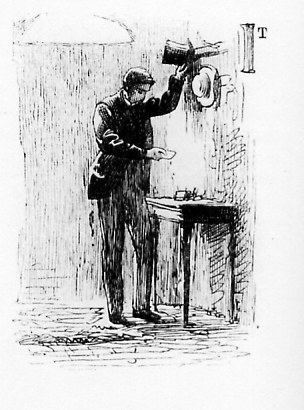 Marcus Stone, [Louis Trevelyan seeing a letter to Emily] , He Knew He Was
Right
Marcus Stone, [Louis Trevelyan seeing a letter to Emily] , He Knew He Was
Right
- Chapter 12: Miss Stanbury's Generosity
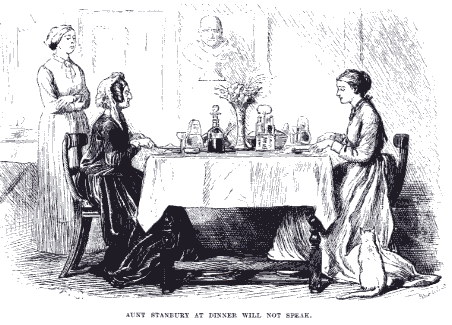 Marcus Stone, "Aunt Stanbury at dinner will not speak" , He Knew He Was
Right
Marcus Stone, "Aunt Stanbury at dinner will not speak" , He Knew He Was
Right
- Chapter 13: The Honourable Mr. Glascock [rubric]
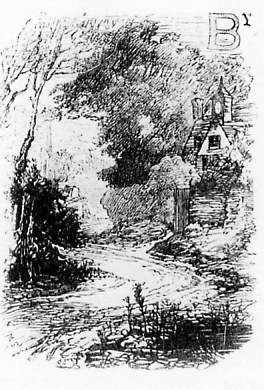 Marcus Stone, [The Clock House at Nuncombe Priory] , He Knew He Was
Right
Marcus Stone, [The Clock House at Nuncombe Priory] , He Knew He Was
Right
- Chapter 16: Dartmoor
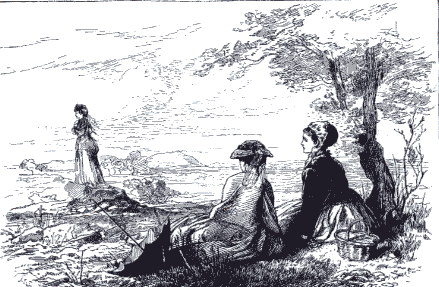 Marcus Stone, "Nora tries to make herself believe" , He Knew He Was
Right
Marcus Stone, "Nora tries to make herself believe" , He Knew He Was
Right
- Chapter 19: Bozzle, the Ex-Policeman [rubric]
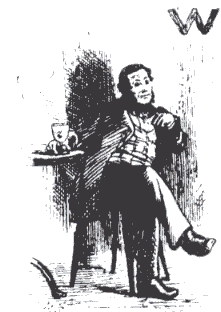 Marcus Stone, [Mr Bozzle] , He Knew He Was
Right
Marcus Stone, [Mr Bozzle] , He Knew He Was
Right
- Chapter 21: Showing how Colonel Osborne went to Nuncombe Putney
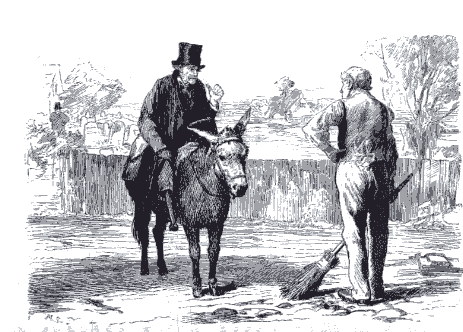 Marcus Stone, "The wooden-legged postman of Nuncombe Putney" , He Knew He
Was Right
Marcus Stone, "The wooden-legged postman of Nuncombe Putney" , He Knew He
Was Right
- Chapter 22: Shewing how Miss Stanbury behaved to her two nieces [rubric]
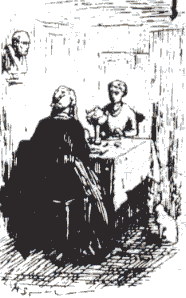 Marcus Stone, [Aunt and Nora Stanbury daily at table] , He Knew He
Was Right
Marcus Stone, [Aunt and Nora Stanbury daily at table] , He Knew He
Was Right
- Chapter 26: A Third Party is so objectionable
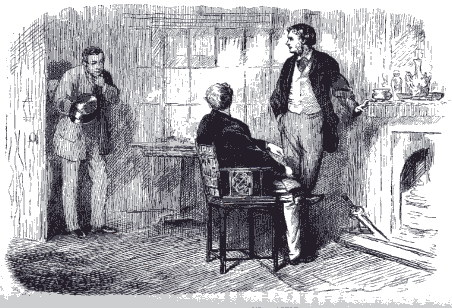 Marcus Stone, "The third person was Mr Bozzle" , He Knew He Was
Right
Marcus Stone, "The third person was Mr Bozzle" , He Knew He Was
Right
- Chapter 26: Great Tribulation [rubric]
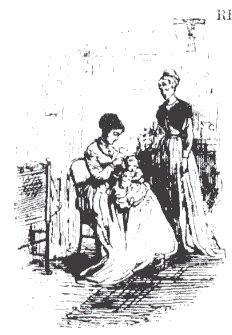 Marcus Stone, "Emily Trevelyan and Nora Rowley with the child] , He Knew He Was
Right
Marcus Stone, "Emily Trevelyan and Nora Rowley with the child] , He Knew He Was
Right
- Chapter 30: Dorothy makes up her Mind
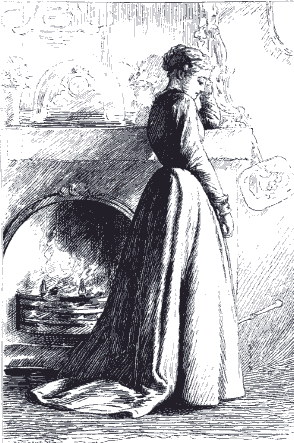 Marcus Stone, "Dorothy makes up her mind" , He Knew He Was
Right
Marcus Stone, "Dorothy makes up her mind" , He Knew He Was
Right
- Chapter 32: The 'Full Moon' at St. Diddulph's
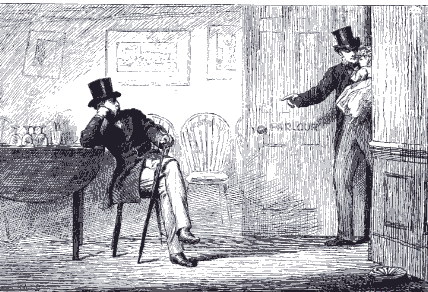 Marcus Stone, "The "Full Moon' at St. Diddulph's" , He Knew He Was
Right
Marcus Stone, "The "Full Moon' at St. Diddulph's" , He Knew He Was
Right
- Chapter 34: Priscilla's Wisdom [rubric]
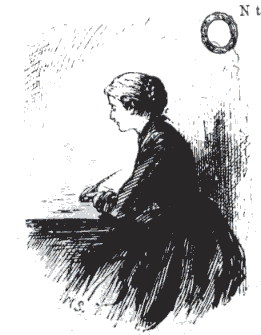 Marcus Stone, [Priscilla Stanbury?] , He Knew He Was
Right
Marcus Stone, [Priscilla Stanbury?] , He Knew He Was
Right
- Chapter 35: Mr. Gibson's Good Fortune
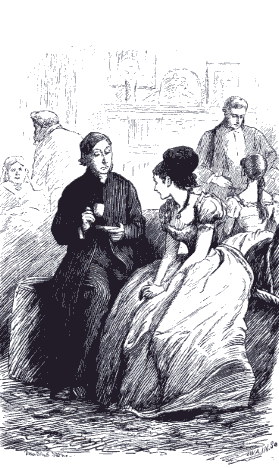 Marcus Stone, "'I wonder why people make these reports" , He Knew He Was
Right
Marcus Stone, "'I wonder why people make these reports" , He Knew He Was
Right
- Chapter 39: Miss Nora Rowley is maltreated
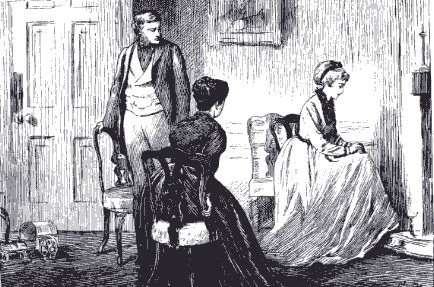 Marcus Stone, "'Am I to go?" , He Knew He Was Right
Marcus Stone, "'Am I to go?" , He Knew He Was Right
- Chapter 41: Showing what took place at St. Diddulph's
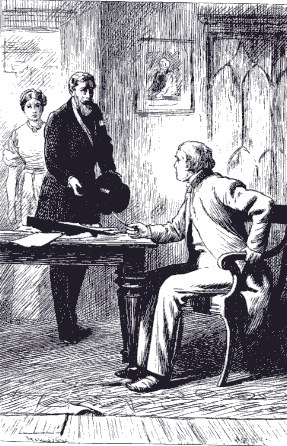 Marcus Stone, "At St Diddulph's" , He Knew He Was Right
Marcus Stone, "At St Diddulph's" , He Knew He Was Right
- Chapter 44: Brooke Burgess takes leave of Exeter
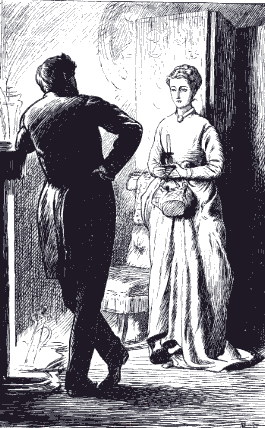 Marcus Stone, "Brooke Burgess takes his leave" , He Knew He Was Right
Marcus Stone, "Brooke Burgess takes his leave" , He Knew He Was Right
- Chapter 47: About Fishing, and Navigation, and Head-dresses [rubric]
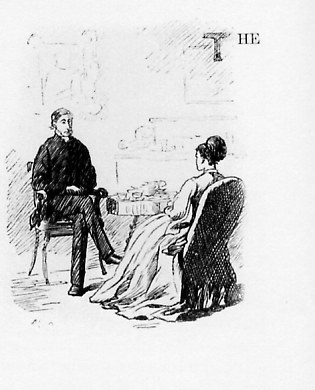 Marcus Stone, [Mr Gibson and Arabella French] , He Knew He Was Right
Marcus Stone, [Mr Gibson and Arabella French] , He Knew He Was Right
- Chapter 53: Hugh Stanbury is shown to be no Conjuror [rubric and full-page illustration]
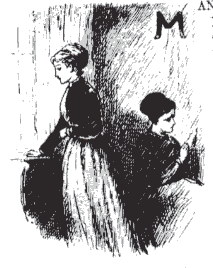 Marcus Stone, [Nora Rowley and Emily Trevelyan at Mr Outhouse's], He Knew He Was Right
Marcus Stone, [Nora Rowley and Emily Trevelyan at Mr Outhouse's], He Knew He Was Right
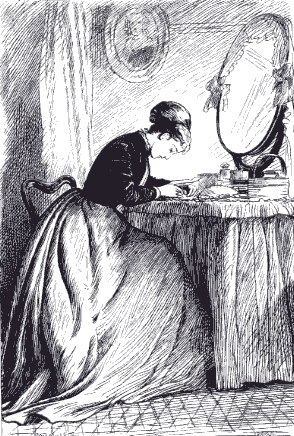 Marcus Stone, "Nora's letter" , He Knew He Was Right
Marcus Stone, "Nora's letter" , He Knew He Was Right
- Chapter 57: Dorothy's Fate
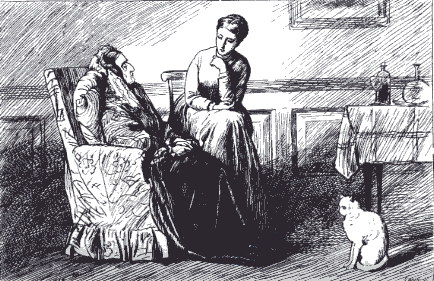 Marcus Stone, "'Brooke wants me to be his wife'" , He Knew He Was Right
Marcus Stone, "'Brooke wants me to be his wife'" , He Knew He Was Right
- Chapter 59: Mr. Bozzle at Home
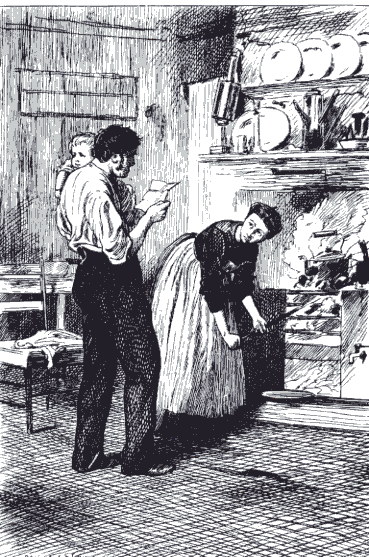 Marcus Stone, "'Put it on the fire-back, Bozzle'" , He Knew He Was Right
Marcus Stone, "'Put it on the fire-back, Bozzle'" , He Knew He Was Right
- Chapter 67: River's Cottage
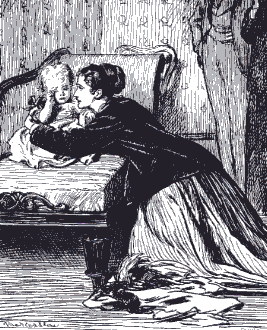 Marcus Stone, "'You haven't forgotten Mamma?'" , He Knew He Was Right
Marcus Stone, "'You haven't forgotten Mamma?'" , He Knew He Was Right
- Chapter 72: The Delivery of the Lamb [rubric]
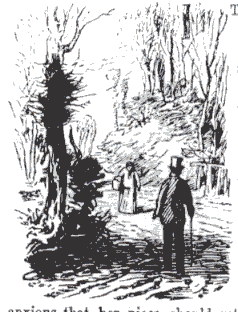 Marcus Stone, [Pathos of Aunt Stanbury, Martha with basket] , He Knew He Was Right
Marcus Stone, [Pathos of Aunt Stanbury, Martha with basket] , He Knew He Was Right
- Chapter 73: Dorothy returns to Exeter
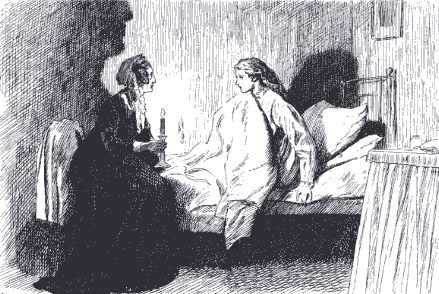 Marcus Stone, "Only the vagaries of an old woman" , He Knew He Was Right
Marcus Stone, "Only the vagaries of an old woman" , He Knew He Was Right
- Chapter 75: The Rowleys go over the Alps [rubric]
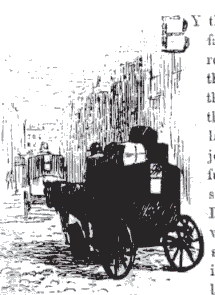 Marcus Stone, [Overpacked carriage] , He Knew He Was Right
Marcus Stone, [Overpacked carriage] , He Knew He Was Right
- Chapter 79: "I can sleep on the boards"
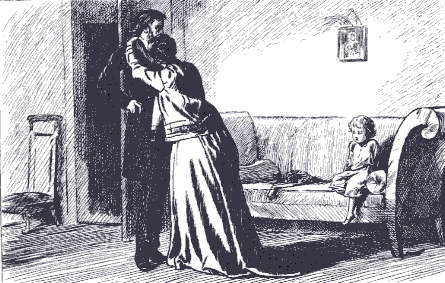 Marcus Stone, "'It is hard to speak sometimes.'" , He Knew He Was Right
Marcus Stone, "'It is hard to speak sometimes.'" , He Knew He Was Right
- Chapter 84: Self-sacrifice [rubric and full-page illustration]
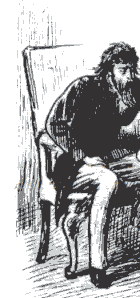 Marcus Stone, [detail from Trevelyan in the house gazing at his son], He Knew He Was Right
Marcus Stone, [detail from Trevelyan in the house gazing at his son], He Knew He Was Right
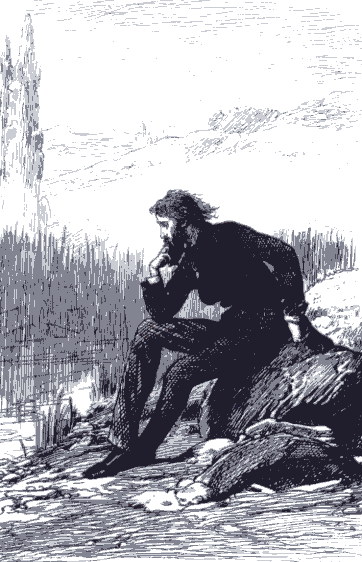 Marcus Stone, "Trevelyan at Casalunga", He Knew He Was Right
Marcus Stone, "Trevelyan at Casalunga", He Knew He Was Right
- Chapter 90: Lady Rowley conquered
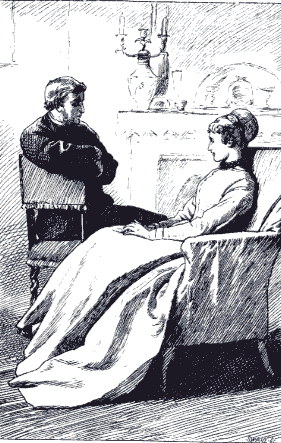 Marcus Stone, "'I must always remember that I met you there.'", He Knew He Was Right
Marcus Stone, "'I must always remember that I met you there.'", He Knew He Was Right
- Chapter 96: Monkhams [rubric and full-page illustration]
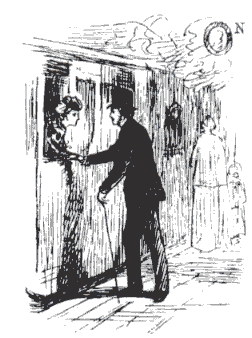 Marcus Stone, [Nora Rowley and Hugh Stanbury at train station], He Knew He Was Right
Marcus Stone, [Nora Rowley and Hugh Stanbury at train station], He Knew He Was Right
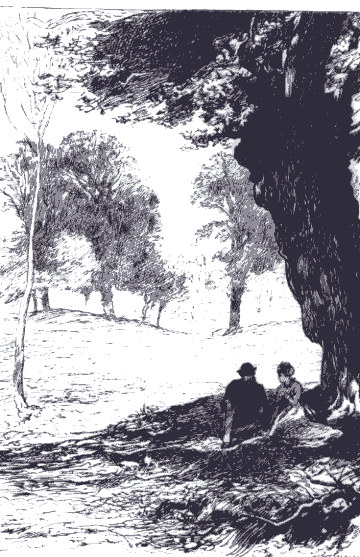 Marcus Stone, Monkhams, He Knew He Was Right
Marcus Stone, Monkhams, He Knew He Was Right
[Although many of Stone's illustrations show the influence of the
popular idyllic style, g]rotesquerie, exaggeration and allegory figure
importantly in the comic illustrations Marcus Stone drew for He Knew He
Was Right. For example, in those illustrations which depict Aunt
Jemima Stanbury's struggle to control her niece, Dorothy Stanbury,
Stone conveys the inner life of Aunt Stanbury's alert watchfulness as
she attempts to control Dorothy by the addition of a quietly droll
white cat whom we see from the back, its tail stretched out by its
side. Stone's tense small lines suggest the cat has patiently folded
its paws one over the other while assuming a sentry-like posture near
Dorothy steathily to survey her ('Aunt Stanbury at dinner will not
speak', facing p. 99). Many of Stone's vignettes are caricatures: we
see a domestic Bozzle, an ugly sleepy Hugh, and a determined Martha,
Aunt Stanbury's servant, seen marching, basket prominently in hand
(presumably holding Aunt Stanbury's peace-offering of the lamb).
Numbers of the small pictures by Stone (and several by Mary Ellen
Edwards for The Claverings) function like Thackeray's unobtrusive
pictorial capitals in his books; they offer emphatic yet unobtrusive
visual reinforcements of casual moments of Trollope's texts which live
apart from the novel's story, moments which capture the oddities of
life, its idiosyncratic comedy and ennui and laconic melancholy.
Stone's depiction of 'the wooden-legged postman of Nuncombe
Putney' blends the techniques and mood of the 1840s with that of the
1860s. Stone has drawn an old man with a withered face and a crumpled
top hat. The picture combines sympathy with detachment. The one-
legged postman sits awkwardly yet patiently on an equally aged and
tired donkey who seems too small for his rider, of whom Trollope
writes:
There is a general understanding that the wooden-legged men
in country parishes should be employed as postmen, owing to
the great steadiness of demeanour which a wooden leg is
generally found to produce. It may be that such men are slower in
their operations than would be biped postmen; but as all private
employers of labour demand labourers with two legs, it is well
the
lame and halt should find a refuge in the less exacting
service of the government (He Knew He Was Right, p. 149,
and illustration facing p. 179).
Stone's depiction of the Mr and Mrs Bozzle together tending the fire
with the man holding the baby also mixes modes ('Put it on the fire-
back, Bozzle', facing p. 494) to capture a tonic moment in the novel,
one casual and prosaic, which by contrast underlines the misery of the
Trevelyans and their baby, depicted by Stone in moments of charged
emotional wrenching ('You haven't forgotten Mamma?' and 'It is hard to
speak sometimes', facing pp. 562 and 683).
The earlier style is particularly effective in conveying
paradoxical moods of sinister comedy. In Stone's aptly-entitled 'That
third person was Mr Bozzle', we see Bozzle's half-apologetic face alive
with suspicion and wariness as for the first time Bozzle intrudes
himself on Hugh Stanbury and Louis Trevelyan. Stone has shown us what
Trollope means when Trollope writes:
As no name was given, Stanbury did not at first
know Mr Bozzle, but he had not had his eye on Mr Bozzle
for half a minute before he recognised the ex-policeman
by the outward attributes and signs of his profession
. . . (p. 221 and facing illustration).
Home
Contact Ellen Moody.
Pagemaster: Jim Moody.
Page Last Updated: 20 February 2004



































































